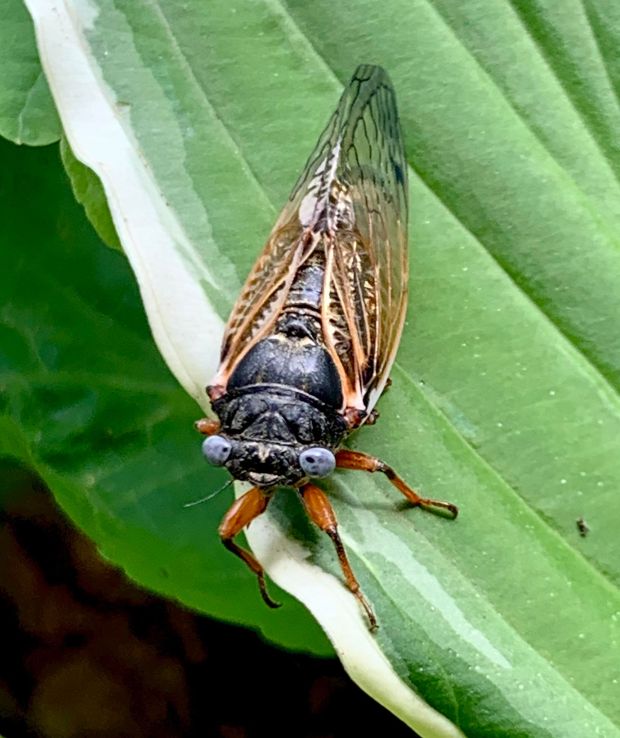Carole Will McDonald didn’t think she would find a blue-eyed cicada when she went looking for one in her front yard in Niles. It was a one-in-a-million shot, she understood, to find one amidst its red-eyed brethren in a sea of cicadas that have taken over the northern suburbs with their signature singing and clumsy flying.
“It was pretty cool… I mean, he did stand out from the others,” McDonald recalled thinking when she first saw it. After taking a picture of the statistical anomaly, she shared what she saw on social media and reached out to the Field Museum to see if they were interested in the sighting.
According to Paul Gulezian, distinguished professor of biology at Oakton College, finding a blue-eyed cicada is indeed a rare occasion. He said that the sightings are known colloquially as one-in-a-million, but studies have also found that cicadas with blue eyes are one in a quarter million.
Gulezian added that there are likely hundreds of millions to one billion cicadas in northern Illinois. A fair estimate of how many of them have blue eyes could be between 1,000 to 10,000, he said. “The vast majority of them go undetected by people, or maybe a bird or a squirrel gets to them… But it is amazing that we’ve actually documented a couple of them, given how rare they are.”
Blue-eyed cicadas have also been spotted in the Southwest suburbs. Gulezian said that there are a couple of leading theories why some cicadas have blue eyes. He said a blue-eyed cicada might have a different DNA strand that gives it blue eyes. Another theory is that when cicadas shed their skin, a thin layer of their exoskeleton might hang on their eyes, given the appearance that their eyes might be blue.






